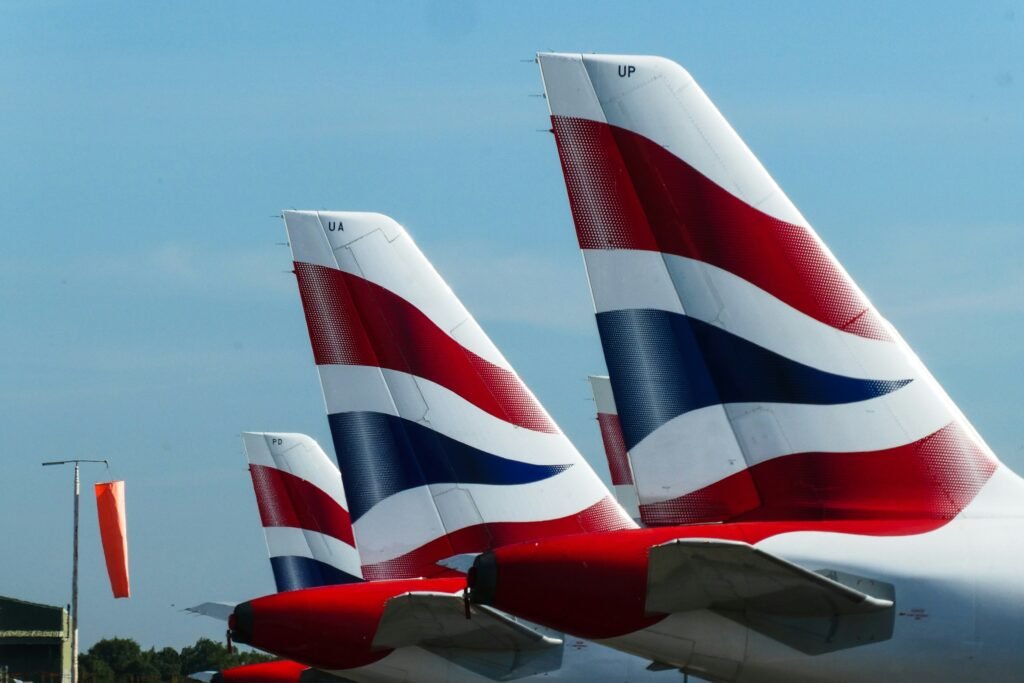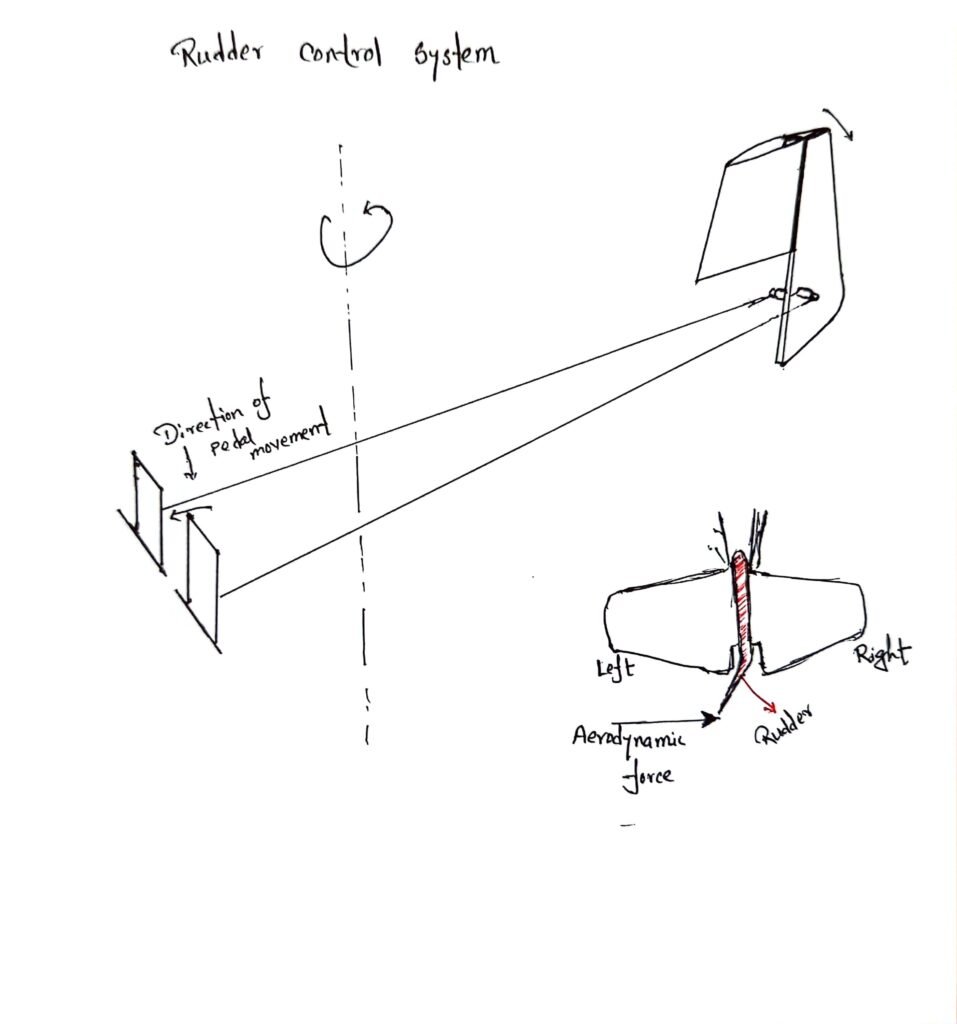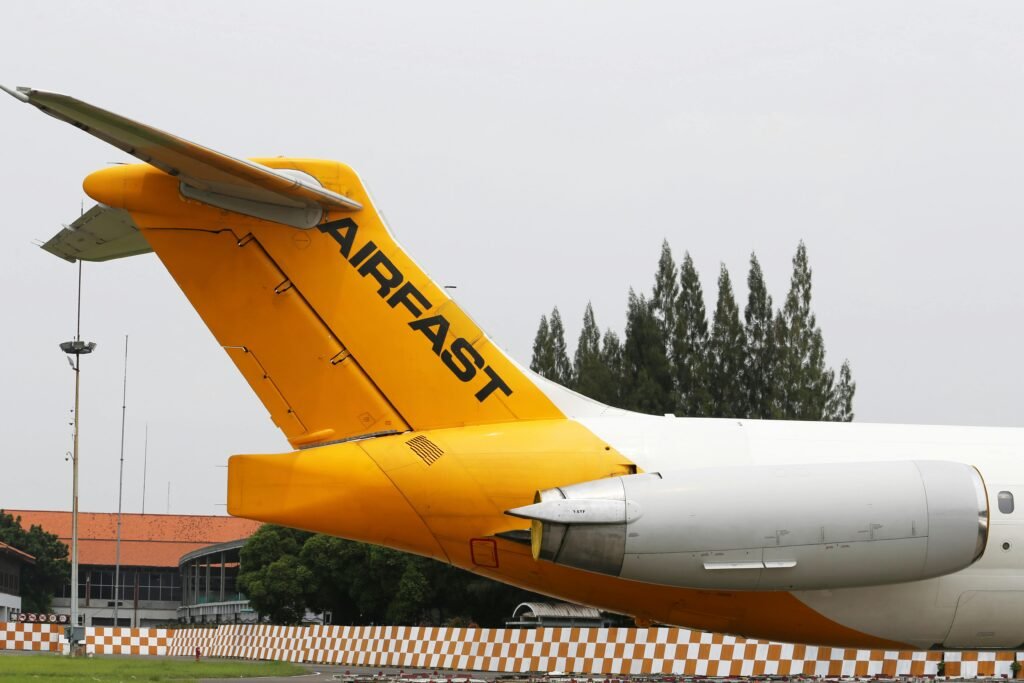Basic Overview of Aircraft Rudder Mechanisms
- AeroDrive Venture
- May 1, 2024
- Category : Aviation
Aircraft Rudder
In the world of aviation, the rudder plays a crucial role in ensuring the stability and control of an aircraft. It is one of the airplane’s three primary flight controls. To control the aircraft through its three primary movements, primary controls are necessary for flying. They are as follows:
Controller: Ailerons.
Axis of Flight: Longitudinal Axis (One wings up & other down).
Movement Name: Roll.
Controller: Elevator.
Axis of Flight: Lateral Axis (nose up & down).
Movement Name: Pitch.
Controller: Rudder.
Axis of Flight: Vertical Axis (nose left & right).
Movement Name: Yaw.

Here, let’s briefly discuss the basics of this crucial part, focusing on its simple operation. We will delve into its complex mechanics in detail with examples in the upcoming days.
What is an Aircraft Rudder?
The rudder of an aircraft is a control surface typically located on the trailing edge of the vertical stabilizer (tail fin) at the rear of the aircraft. Its primary function is to control the yaw motion of the aircraft, which refers to the side-to-side movement of the nose of the plane. The rudder is usually composed of lightweight yet durable materials to ensure efficient operation without adding excessive weight to the aircraft. Common materials used in constructing aircraft rudders include aluminum, composite materials, and sometimes titanium.
The rudder is one of the airplane’s three primary flight controls. It mimics the rudder of a boat, which is mounted on the rear of a vessel to control its heading, making it turn through the water.
Unlike boats, airplanes work in three dimensions. So, the rudder does not change the airplane’s heading on its own. Instead, airplanes turn with a combination of inputs from all control surfaces.
Pedals within the cockpit control the rudder on a plane. Pressing the left pedal deflects the rear of the rudder to the left. This makes the nose of the aircraft yaw to the left.

The rudder is used to control the position (vertical axis) of the nose of the aircraft. Interestingly, it is not used to turn the aircraft in flight. Ailerons or spoilers are used to bank an airplane to one side, which produces an aircraft turn. The aircraft’s flight path curves because of the banking, which produces an unbalanced side force component of the large wing lift force. During the maneuver, the rudder input ensures that the aircraft is correctly aligned to the curved flight path. If not, the aircraft would experience greater drag or maybe an undesirable yaw condition, in which the nose would deviate further from the flight path because of increased drag from the control surfaces.
How Does the Rudder Work?
The aircraft’s rudder controls yaw, which is the movement around its vertical axis. Like the other primary control surfaces, the rudder is a movable surface hinged to a fixed surface, in this case, to the vertical stabilizer or fin. Aerodynamics concepts explain how a rudder works. The rudder is controlled via the aircraft’s control system. In most modern aircraft, this is done electronically through a fly-by-wire system.

The pilot can modify the location of the rudder by moving the rudder pedals in the cockpit, which translates into electronic impulses. The airflow around the aircraft’s tail varies when the pilot modifies its angle. The rudder is controlled by the left and right rudder pedals. By pushing the left pedal, the rudder moves left. The airplane rotates along its vertical axis because of the force created by this change in airflow pushing the tail in the opposite direction (here right direction). When the rudder is deflected into the airflow, a horizontal force is exerted in the opposite direction. This alters the airflow around the vertical stabilizer/rudder and creates a sideward lift that moves the tail to the right and yaws the nose of the airplane to the left.
The Purpose of the Rudder

The rudder plays a crucial role in controlling the yaw motion of an aircraft. Yaw refers to the side-to-side movement of the nose of the plane. By deflecting the rudder, pilots can adjust the aircraft’s heading during flight. The rudder is also used to keep the aircraft coordinated. By independently controlling the yaw of the aircraft from the roll, the pilot can maintain precise control in dynamic situations. This capacity enables us to intentionally slip the aircraft, a handy skill to have for crosswind landings. The forward slip to land, another handy maneuver that enables a pilot to approach a runway steeply without flaps, wouldn’t be possible without your trusty rudder.
Typical Problems with Aircraft Rudders and Their Fixes

Aircraft rudders are subjected to wear and tear and can experience issues over time, just like any other mechanical part. Surface damage, control cable tension problems, and hinge wear are a few of the most frequent issues. Finding and fixing these issues before they worsen depends heavily on routine maintenance and inspections. For example, hinge wear can be found and fixed during routine inspections to prevent loss of control. Similarly, routine inspections of the control cables can guarantee that they are kept in the correct tension and free from damage.
Conclusion
Any aircraft’s rudder is an essential part that controls the direction and maintains the aircraft’s stability while in flight. Its precise operation is essential for safe and efficient aviation. Knowing its functions and significance can lead to a deeper appreciation of everything from its fundamental design and operation to the newest technological developments. Gaining a greater comprehension of this crucial element can open your eyes to fresh perspectives on the marvels of flight.
